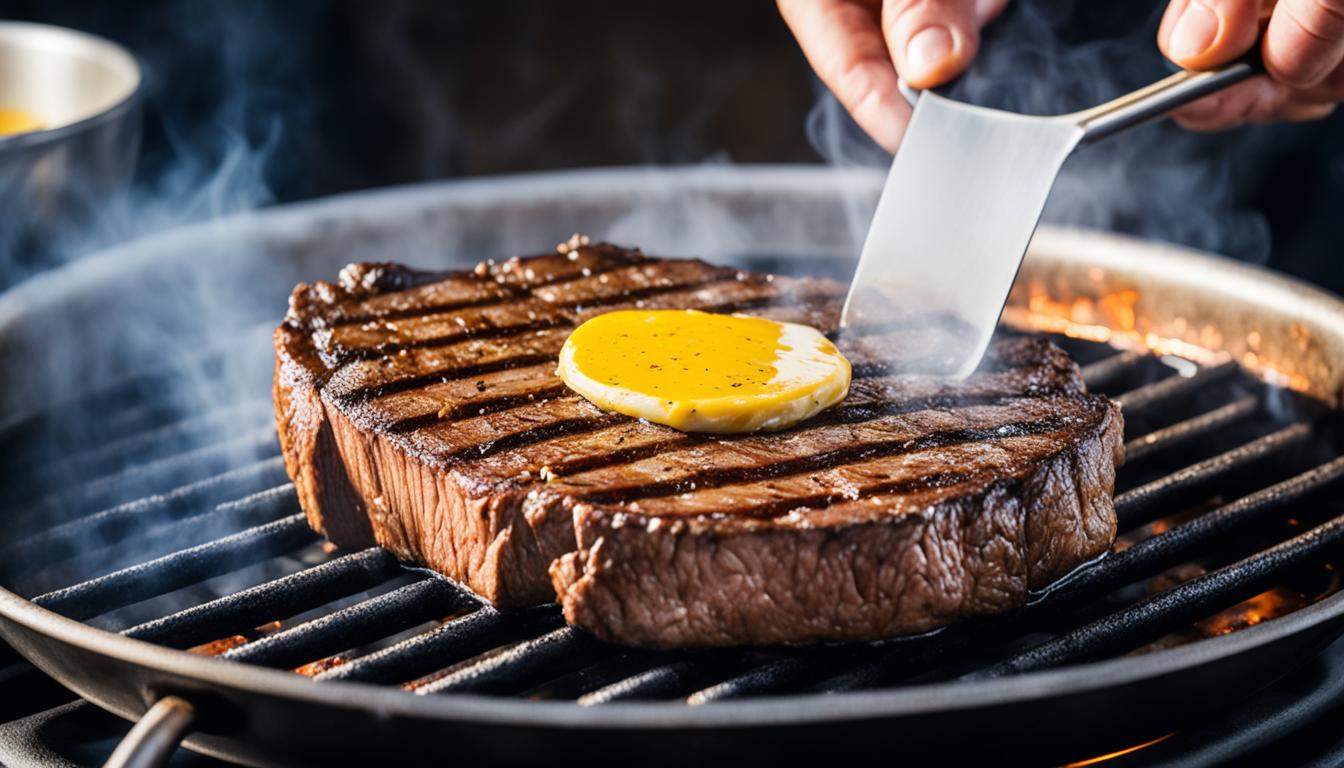Resting meat has long been a topic of debate among chefs and home cooks alike. Should we let our mouthwatering steak rest before devouring it, or is it simply a waste of time? Today, we challenge the common belief and introduce you to The Food Lab’s revolutionary Fat Flash Method. Prepare to have your culinary practices turned upside down as we delve into the science behind resting meat and explore how the Fat Flash Method combines the benefits of resting with a crispy crust.
But first, let’s dive into the fascinating world of food science and the mysteries surrounding the perfect steak. Join us as we unravel the secrets of meat juiciness, the influence of temperature gradients, and the role of hot juices. Discover how resting meat can enhance texture and how achieving a crispy crust can be just as important as retaining juices. Get ready to rethink your approach to cooking steak with The Food Lab’s game-changing Fat Flash Method.
So, should you really rest your steak? Is a crispy crust the key to a mouthwatering culinary experience? Let’s find out together as we introduce you to the Fat Flash Method, a steak cooking technique that guarantees tender meat, bursting with flavor. Join us in our exploration of food science, meat cooking techniques, and the cutting-edge Fat Flash Method. Get your apron on and let’s dive in!
The Science Behind Resting Meat
Resting meat has been praised for its ability to retain juices and enhance texture. The exact mechanism of how resting affects meat juiciness is still debated. Traditional theories suggested that resting allows juices to accumulate in the cooler parts of the meat, resulting in their expulsion when cut. However, more recent theories propose that hotter juices, which run more freely, are the main culprits.
When meat is allowed to rest, it reaches a stable equilibrium at a lower temperature, reducing the leakage of hot juices. This temperature gradient plays a significant role in preserving meat juiciness. The pressure inside the meat pushes the hot juices towards the cooler areas, preventing their immediate release when the meat is sliced.
Resting meat is also crucial in maintaining the desired meat texture. If meat is cut immediately after cooking, the internal pressure can cause the hot juices to burst out, resulting in a loss of moisture. By allowing the meat to rest, the pressure gradually decreases, ensuring that the meat maintains its juiciness.
However, one drawback of resting meat is the potential loss of the crispy crust that forms during cooking. The crust, also known as the “bark” or “Maillard crust,” is what gives the meat its flavorful and textural appeal. Resting meat can cause this crust to become less “alive and snappy.”
The perception of juiciness involves various factors, including how quickly the juices are squeezed out by our teeth and the presence of liquid fat. Resting meat helps retain these attributes by allowing the juices to redistribute throughout the meat instead of being released immediately. Additionally, the presence of liquid fat can contribute to the overall taste and juiciness of the meat.
The Food Lab delves into these scientific explanations to help us understand the importance of achieving both juiciness and a crispy crust when resting meat. By mastering the art of temperature control and understanding the science behind meat texture, we can ensure that our steaks are not only tender and juicy but also have a delectably crispy exterior.
Introducing The Fat Flash Method
The Food Lab brings you the game-changing Fat Flash Method, a revolutionary technique for cooking the perfect steak. Inspired by restaurant practices, this method combines the benefits of resting meat with a crispy crust that will tantalize your taste buds.
So, how does it work? First, we recommend resting the steak after cooking. This allows the meat to relax and reabsorb its flavorful juices. But here’s the twist: just before serving, we quickly re-crisp the crust, ensuring that every bite is packed with flavor and texture.
Whether you’re grilling outdoors or cooking indoors, implementing the Fat Flash Method is easy. Start by searing the steak in hot fat to create a beautiful crust. Then, let it rest as the delicious flavors develop. Finally, reheat the fat and juices, giving your steak that final burst of flavor, resulting in tender, juicy meat with a mouthwateringly crispy exterior.
The Fat Flash Method takes into account the science behind meat texture and flavor development, guaranteeing a culinary experience that will leave you wanting more. With step-by-step instructions provided by The Food Lab, you can elevate your steak cooking game and impress your family and friends with this innovative technique. Say goodbye to dull and uninspiring steak, and say hello to a tender, flavorful masterpiece!
